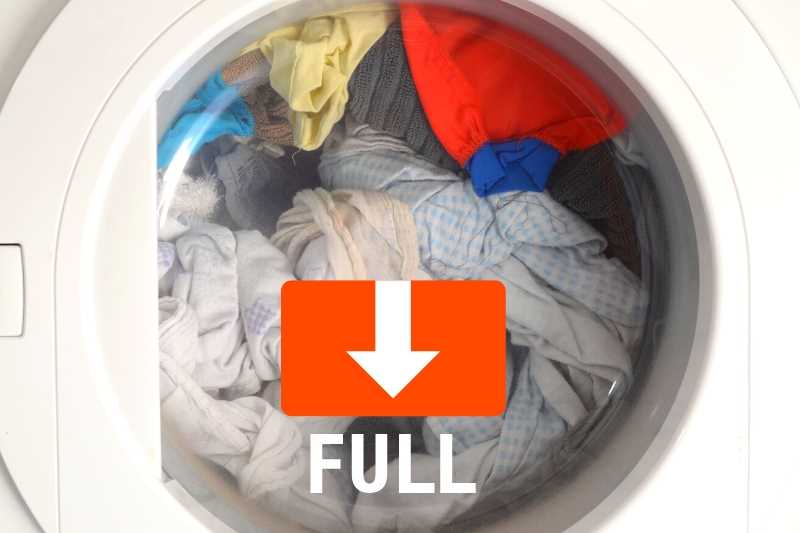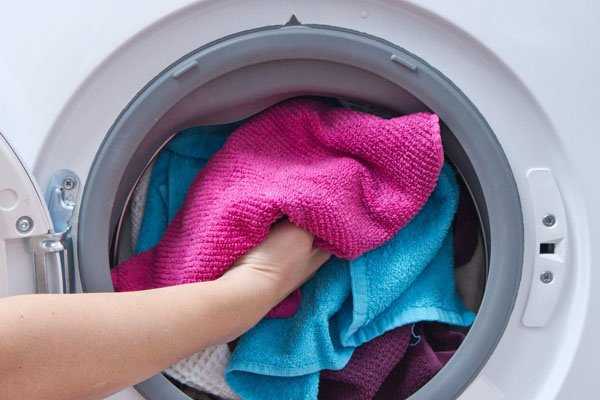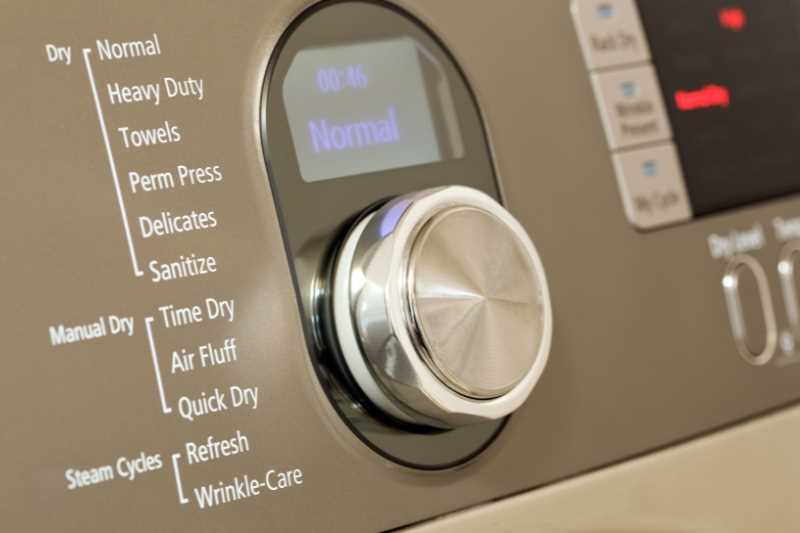




When it comes to drying towels, many factors can affect the drying time in a tumble dryer. The type of fabric, the size of the load, and the settings on your tumble dryer all play a role in determining how long it will take for your towels to dry.
The thickness of the towels is an important factor to consider. Thicker towels will naturally take longer to dry than thinner towels. Additionally, the fabric composition of the towels can affect drying time. Towels made from cotton tend to absorb more moisture and may take longer to dry compared to towels made from synthetic materials or a blend of cotton and synthetic fibers.
The size of the load in your tumble dryer can also impact the drying time. If you overload the dryer with too many towels, they may not have enough space to tumble and dry efficiently. It is important to leave enough room for the towels to move around in the dryer so that they can dry evenly.
Finally, the settings on your tumble dryer can significantly impact the drying time. Most tumble dryers offer different heat settings, such as high, medium, and low. Using a higher heat setting will generally result in faster drying times, but it may also increase the risk of damaging the towels or causing shrinkage. It is recommended to follow the manufacturer’s guidelines for drying towels and adjust the settings accordingly.
In conclusion, the time it takes for towels to dry in a tumble dryer depends on various factors, including the thickness and fabric composition of the towels, the size of the load, and the settings on your tumble dryer. It is important to consider these factors and adjust the settings accordingly to ensure that your towels are properly dried without any damage.
Factors influencing the drying time of towels in a tumble dryer
When using a tumble dryer to dry your towels, several factors can affect the drying time. Understanding these factors can help you optimize the drying process and ensure that your towels come out dry and ready to use.
1. Material of the towels:
The material of the towels plays a significant role in determining the drying time. Towels made of thicker, more absorbent materials like cotton tend to take longer to dry compared to towels made of thinner materials.
2. Size and thickness:
The size and thickness of the towels also impact the drying time. Larger and thicker towels absorb more moisture and, as a result, will take longer to dry.
3. Moisture content:
The initial moisture content of the towels when they are placed in the dryer can affect the drying time. If the towels are slightly damp or wet, it will take longer for them to dry compared to towels that have been wrung out or air-dried beforehand.
4. Dryer settings:
The settings on your tumble dryer, such as heat levels and drying time, can influence how long it takes for your towels to dry. Higher heat settings and longer drying times will generally result in faster drying, but may also increase the risk of damaging the towels.
5. Overloading the dryer:
Overloading the dryer with too many towels can impede airflow and reduce the efficiency of the drying process. It is advisable to load the dryer with a reasonable number of towels to ensure proper drying.
6. Ventilation:
Proper ventilation in your laundry room can also affect the drying time. Good airflow helps moisture to evaporate more quickly, resulting in faster drying times for your towels.
7. Environmental factors:
Environmental factors such as humidity levels and room temperature can impact the drying time. High humidity levels may prolong the drying process, while low humidity levels and higher room temperatures can help speed up drying.
8. Maintenance and cleanliness of the dryer:
A dryer that is not properly maintained or has a buildup of lint can affect its performance and drying efficiency. Regularly cleaning the lint filter and ensuring proper venting can help optimize drying times.
9. Wrinkle release or fabric softener:
Using wrinkle release or fabric softener in the drying cycle can extend the drying time of your towels. These products add moisture to the towels, leading to longer drying times.
By considering these factors and making adjustments accordingly, you can reduce the drying time of your towels in a tumble dryer, saving both time and energy.
Material composition of towels

Towels are made from various materials which can affect their drying time in a tumble dryer. The material composition plays a crucial role in determining how quickly towels will dry and how absorbent they are.
Cotton towels
Cotton towels are the most common type of towels and are known for their absorbency. They are made from 100% cotton fibers, which allow them to absorb a lot of moisture. Cotton towels can take longer to dry compared to towels made from synthetic materials because cotton absorbs water more easily and holds onto it longer.
Microfiber towels
Microfiber towels are made from synthetic fibers that are smaller than a strand of silk. They are known for their quick-drying properties and high absorbency. Microfiber towels can easily trap moisture and are often used for drying dishes and cleaning surfaces. Due to their synthetic composition, they can dry faster in a tumble dryer compared to cotton towels.
Bamboo towels

Bamboo towels are becoming increasingly popular due to their eco-friendly properties. They are made from bamboo fibers that are known for their softness, absorbency, and antimicrobial properties. Bamboo towels are highly absorbent and can dry relatively quickly in a tumble dryer.
Linen towels

Linen towels are made from flax fibers and are known for their strength and durability. They are less absorbent compared to cotton towels but have excellent moisture-wicking properties. Linen towels can take longer to dry in a tumble dryer compared to cotton towels.
Blend towels
Some towels are made from a blend of different materials, such as cotton and polyester. These blend towels combine the absorbency of cotton with the quick-drying properties of synthetic fibers. The drying time of blend towels can vary depending on the percentages of each material in the blend.
Conclusion
The material composition of towels greatly affects their drying time in a tumble dryer. Cotton towels tend to take longer to dry compared to synthetic towels like microfiber. Bamboo and linen towels also have their unique properties that affect their drying time. Understanding the material composition of your towels can help you choose the best drying method and optimize drying time.
Size and thickness of towels

The size and thickness of towels can greatly influence the drying time in a tumble dryer. Larger towels will generally take longer to dry compared to smaller towels, as they have more surface area to dry. Thick towels will also take longer to dry compared to thinner towels, as they absorb more moisture and have more fibers to dry.
The size of towels can vary widely, from small hand towels to large bath towels. Hand towels are typically smaller and thinner, which allows them to dry more quickly. Bath towels, on the other hand, are larger and thicker, which means they may take more time to dry in a tumble dryer.
Thicker towels, such as those made of terry cloth, can also take longer to dry compared to thinner towels, such as those made of microfiber. This is because terry cloth towels have more loops and fibers that can absorb moisture, while microfiber towels have a more compact and dense structure that allows them to dry faster.
When drying towels in a tumble dryer, it is important to consider their size and thickness to determine the appropriate drying time. Thicker towels may require a longer drying cycle or higher heat setting to ensure they are fully dried, while thinner towels may dry quickly with a shorter drying cycle.
Load capacity of the tumble dryer
The load capacity of a tumble dryer refers to the maximum weight of laundry that the machine can effectively and efficiently dry in one cycle. It is an important factor to consider when using a tumble dryer, as overloading the machine can result in longer drying times and reduced performance.
Most tumble dryers have load capacities ranging from 4kg to 10kg. The specific load capacity of a dryer can usually be found in the manufacturer’s specifications or user manual.
Factors affecting load capacity

Several factors can affect the load capacity of a tumble dryer:
- Size of the machine: Generally, larger tumble dryers have larger load capacities. This allows for more laundry to be dried in a single cycle.
- Type of dryer: Different types of tumble dryers, such as condenser dryers or heat pump dryers, have varying load capacities. Heat pump dryers, for example, often have larger load capacities compared to condenser dryers.
- Energy efficiency: Some energy-efficient tumble dryers may have smaller load capacities to optimize energy usage and reduce drying time.
Choosing the right load capacity

When choosing a tumble dryer, it is important to consider your specific needs and laundry habits. Here are some factors to consider:
- Household size: Consider the number of people in your household and the amount of laundry that needs to be washed and dried regularly. A larger household may require a dryer with a larger load capacity.
- Frequency of use: If you frequently do laundry and need fast drying times, a tumble dryer with a larger load capacity may be more suitable.
- Space availability: Consider the available space in your laundry area. Larger tumble dryers with larger load capacities will require more space for installation.
By considering these factors, you can choose a tumble dryer with an appropriate load capacity that meets your specific needs and ensures efficient drying of your laundry.
Temperature settings of the tumble dryer
When drying towels in a tumble dryer, it is important to choose the appropriate temperature setting to ensure efficient and effective drying. The right temperature setting will not only help to dry the towels quickly but also prevent any damage to the fabric.
Most modern tumble dryers offer a range of temperature settings, typically labeled as low, medium, and high heat. However, some dryers may have more specific temperature options, such as delicate or extra hot.
- Low heat: This setting is suitable for towels made of delicate or synthetic materials. It uses lower temperature and gentler airflow to prevent shrinking or damaging the fabric.
- Medium heat: This setting is appropriate for most types of towels made of cotton or a cotton blend. It provides a good balance between drying time and fabric care.
- High heat: This setting can be used for thick or heavily soiled towels, as it provides the fastest drying time. However, it should be used sparingly, as high heat may cause damage to the towels over time.
It is recommended to follow the care instructions provided by the towel manufacturer when selecting the temperature setting on the tumble dryer. These instructions may specify a maximum temperature or recommend a specific setting for the best results.
Additionally, it is worth noting that overloading the tumble dryer can affect the drying time and efficiency. To ensure optimum drying, leave enough space for the towels to move freely and allow for proper air circulation.
| Temperature Setting | Recommended Use |
|---|---|
| Low heat | Delicate or synthetic towels |
| Medium heat | Cotton or cotton blend towels |
| High heat | Thick or heavily soiled towels (use sparingly) |
By selecting the appropriate temperature setting and following the care instructions, you can ensure that your towels dry efficiently and remain in good condition for longer.
Humidity level and air circulation
When it comes to drying towels in a tumble dryer, the humidity level and air circulation play a crucial role in determining how long it takes for them to dry.
Humidity level
The humidity level in the dryer is important because it affects the rate at which moisture can evaporate from the towels. If the humidity is too high, the air inside the dryer becomes saturated with moisture, making it much more difficult for the towels to dry quickly. On the other hand, if the humidity is too low, the air may become too dry, leading to static build-up and potential damage to the towels. It is important to find the right balance in order to achieve optimal drying conditions.
Air circulation

Proper air circulation is also crucial for drying towels efficiently. The air needs to flow freely through the dryer, allowing the moisture to escape from the towels and be replaced with drier air. Without adequate air circulation, the towels may take longer to dry or may not dry evenly. It is important to ensure that the dryer’s vents and filters are clean and clear of any obstructions, as this can impede air flow and hinder the drying process.
Additionally, some tumble dryers offer features such as sensor drying or multiple heat settings that can help optimize air circulation and humidity control. These features can automatically adjust the drying time and temperature based on the moisture level detected in the towels, resulting in more efficient and effective drying.
Conclusion
To ensure that towels dry efficiently in a tumble dryer, it is important to consider the humidity level and air circulation. Finding the right balance of humidity and allowing for proper air flow can help towels dry more quickly and evenly. Additionally, utilizing features such as sensor drying or multiple heat settings can further optimize the drying process. By taking these factors into account, you can minimize drying time and ensure that your towels come out dry and ready to use.
FAQ
How long does it usually take for towels to dry in a tumble dryer?
The time it takes for towels to dry in a tumble dryer can vary depending on various factors such as the size of the towels, the type of tumble dryer, and the settings used. On average, it can take anywhere from 30 minutes to 1 hour for towels to dry completely in a tumble dryer.
Are there any tips to help towels dry faster in a tumble dryer?
Yes, there are a few tips to help towels dry faster in a tumble dryer. First, make sure to shake the towels out before putting them in the dryer to remove any excess moisture. Also, avoid overloading the dryer as this can prevent proper airflow. Lastly, consider using a higher heat setting or adding dryer balls to help fluff up the towels and improve drying efficiency.
Can towels get damaged if they are dried in a tumble dryer?
Towels can potentially get damaged if they are dried improperly in a tumble dryer. High heat settings can cause the towels to shrink or lose their softness over time. It’s important to follow the care instructions on the towels and use the appropriate heat setting for the fabric. Additionally, overloading the dryer can lead to uneven drying and potential damage.
Is it more energy-efficient to dry towels in a tumble dryer or hang them to dry?
Hanging towels to dry is generally more energy-efficient than using a tumble dryer. Using a clothesline or drying rack allows towels to air dry naturally without using electricity. However, if time is a constraint or the weather doesn’t permit outdoor drying, using a tumble dryer can be a quicker alternative.
What can I do if my towels are still damp after drying them in a tumble dryer?
If your towels are still damp after drying them in a tumble dryer, there are a few things you can try. First, check if the dryer was overloaded or if the towels were clumped together, as this can prevent proper airflow. You can also try running the dryer for a few more minutes on a higher heat setting. If the issue persists, it may be worth checking if the dryer vent needs cleaning or if the towels need to be dried for a longer duration.











